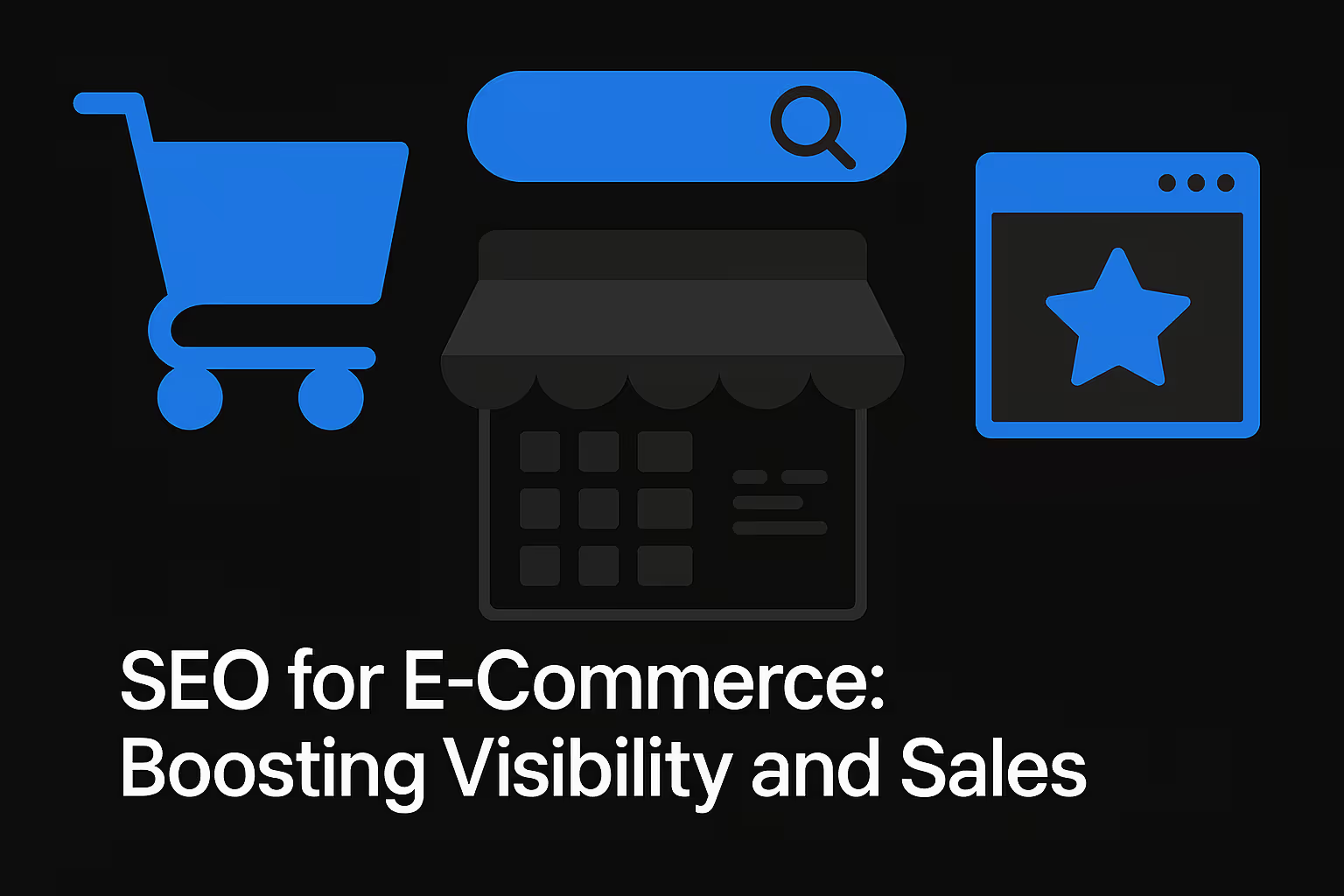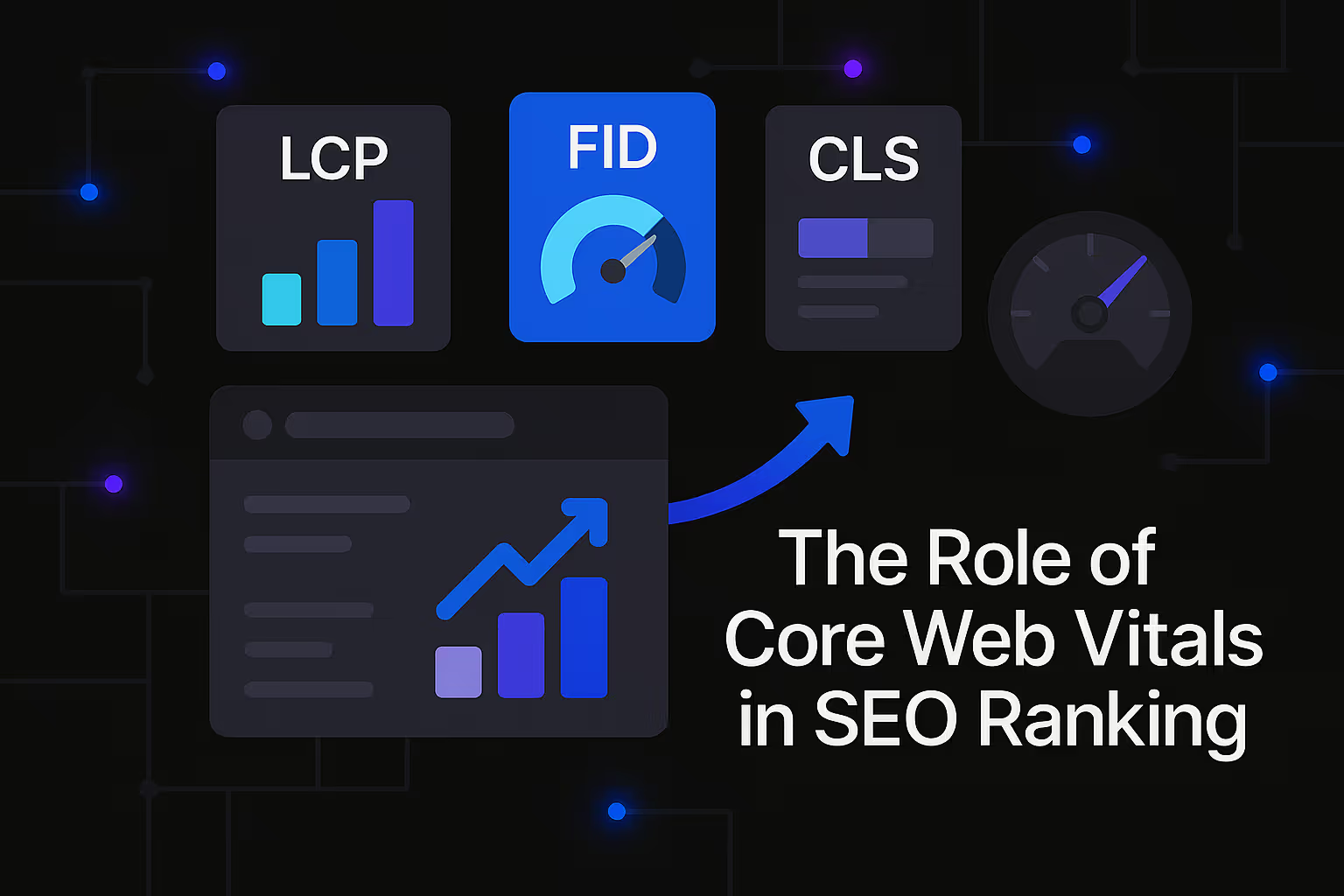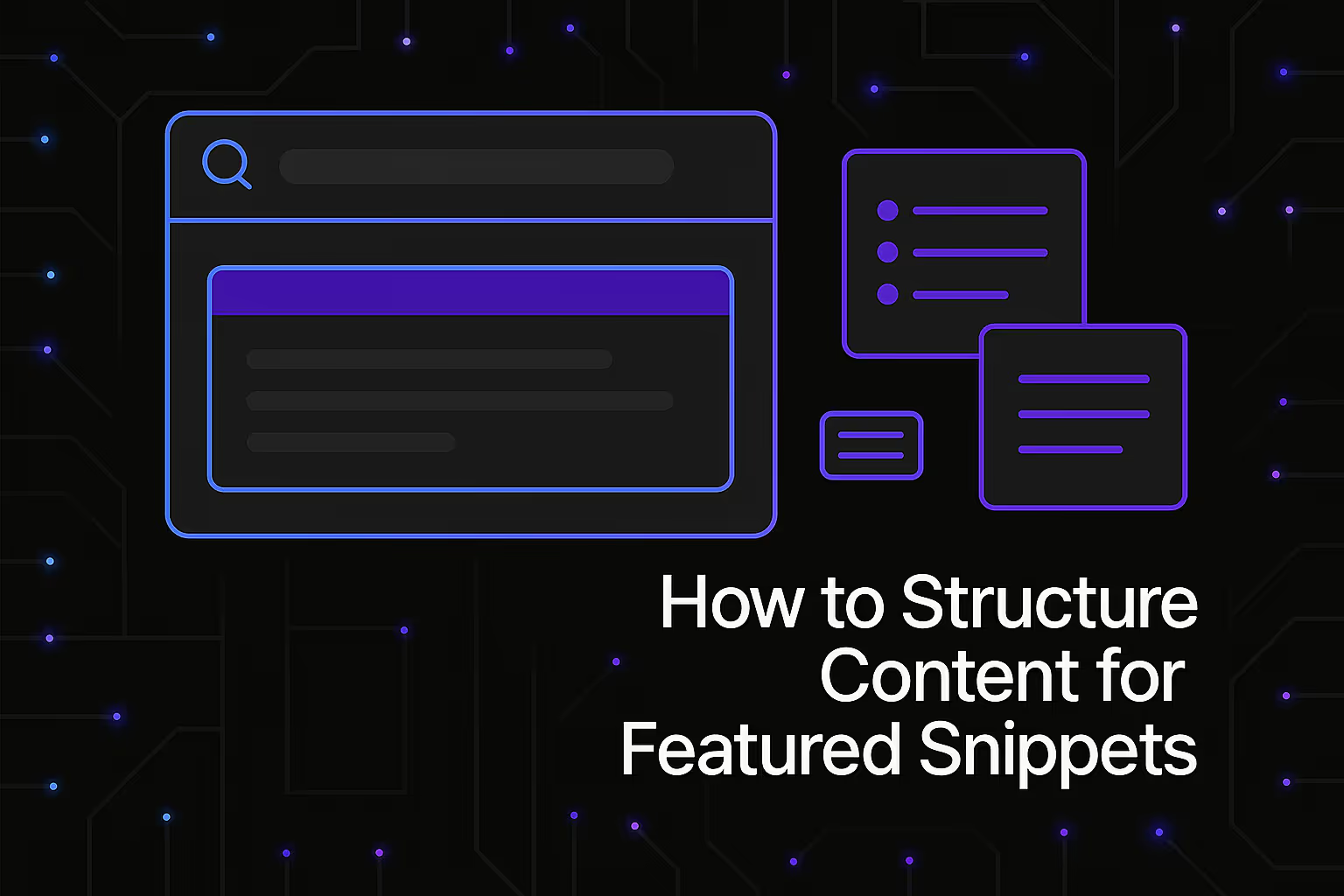SEO for E-Commerce: Boosting Visibility and Sales

In the dynamic world of e-commerce, merely having a product or service to sell is not enough. To truly thrive, online businesses must be discoverable, accessible, and authoritative in the vast digital landscape. This is where Search Engine Optimization (SEO) becomes not just a helpful tool, but an indispensable strategy for boosting visibility and, ultimately, driving sales. Effective SEO for e-commerce transcends simple keyword stuffing; it involves a holistic approach that aligns with how search engines understand and rank content, while always prioritizing the human user.
The Foundation of E-Commerce SEO: Understanding Search Engine Mechanics
To truly excel in e-commerce SEO, one must first grasp the fundamental mechanics of how search engines operate. This involves a journey through crawling, indexing, and ranking algorithms, each a critical step in a website's path to discoverability.
Crawling: The Digital Discovery Phase
Search engines like Google employ web crawlers, often referred to as Googlebot, to systematically explore the internet. These automated programs are constantly on the lookout for new and updated web pages, adding them to Google’s immense index. The crawlers follow algorithmic processes to determine which websites to visit, how frequently to crawl them, and the number of pages to fetch from each site. A crucial design aspect of Googlebot is its programming to avoid overwhelming a website’s server with excessive requests, ensuring a smooth and efficient discovery process.
For an e-commerce platform, this means your content must be inherently crawlable. This necessitates ensuring that product pages, category pages, and blog posts are not hidden behind complex JavaScript that crawlers may struggle to render properly. Furthermore, all essential resources, such as product images, CSS files for styling, and JavaScript files for functionality, must be readily accessible to Googlebot.
Managing crawlability, especially for e-commerce sites with a large volume of pages, involves proactive crawl budget optimization. Googlebot's algorithmic crawling processes, combined with the guidance provided by sitemaps and the restrictions imposed by robots.txt files, indicate that an e-commerce SEO strategy should not merely produce content but also strategically manage its discoverability. If you generate a vast amount of product pages or blog content, it's crucial to be acutely aware of the crawl budget allocated to your website. This awareness means you should consider implementing specific robots.txt rules for unimportant resources or any duplicate content, preventing Googlebot from expending valuable crawl resources on pages that do not significantly contribute to SEO goals. Concurrently, ensuring that sitemaps are always up-to-date, especially when new products are launched or content is published rapidly, is vital. Sitemaps play a significant role in encouraging and prioritizing the crawling of important pages, elevating your e-commerce platform's function from a passive content creator to an active manager of your website's crawl efficiency.
Indexing: Transforming Data into Searchable Information
Following the crawling phase, Google proceeds to analyze the textual content, images, and video files found on a page, subsequently storing this information in its massive index. This indexing stage involves processing key content tags and attributes, such as <h1> elements and alt attributes for images. A significant part of this process is the identification of duplicate content across the internet and the selection of a single, preferred URL, known as the canonical URL, to represent that content in search results. It is important to note that indexing is not guaranteed; factors such as low-quality content, the presence of noindex tags, or a poorly designed website can impede a page’s inclusion in the index.
For e-commerce, the implication is clear: your product pages, category descriptions, and blog content must be inherently indexable. This necessitates the correct and strategic use of metadata, a consistent focus on high-quality and unique product descriptions, and the avoidance of practices that could lead to indexing impediments, such as excessive boilerplate text or thin content. Every piece of content on your e-commerce site should be designed with indexability in mind, ensuring it can be processed and stored efficiently by search engines.
Ranking Algorithms: Determining Visibility
Once a page is crawled and indexed, it becomes eligible to appear in search results. The final stage is ranking, where sophisticated algorithms determine the order in which pages appear for specific queries. These algorithms consider hundreds of factors, constantly evolving to provide the most relevant and highest-quality results to users. For e-commerce, understanding these ranking signals is paramount to achieving top visibility.
Core to modern ranking is the concept of user-first design. While algorithms are complex, their ultimate goal is to serve human users effectively. This means that content must be helpful, reliable, and designed with a "people-first" philosophy, aligning directly with Google's stated preferences. Your e-commerce content should prioritize user satisfaction and genuine value over mere algorithmic manipulation.
Another guiding principle for e-commerce ranking is E-E-A-T: Experience, Expertise, Authoritativeness, and Trustworthiness. This framework must be deeply integrated into every stage of content generation, from initial product ideation to final optimization of product descriptions and supporting content. For an e-commerce site, demonstrating E-E-A-T means showcasing product knowledge, providing expert advice in blog posts, establishing your brand as an authority in your niche, and building trust through transparent policies and customer reviews. This principle ensures that your e-commerce content not only provides information but also establishes credibility and builds trust with both your audience and search engines.
Furthermore, search engines prioritize semantic understanding over simple keyword matching. This means the AI guiding your e-commerce SEO needs to comprehend the full context, underlying intent, and intricate relationships between concepts. This allows for the creation of content that truly answers user queries comprehensively, rather than just matching isolated terms. For an e-commerce store, this translates to creating detailed product descriptions that anticipate user questions, category pages that encompass related product attributes, and blog posts that delve into broader topics relevant to your products, covering a range of related keywords and concepts.
Finally, technical SEO forms the bedrock. Even the most compelling and relevant e-commerce content requires a robust technical infrastructure to be discoverable and properly indexed by search engines. This encompasses aspects like site speed, mobile-friendliness, secure connections (HTTPS), and structured data markup, all of which directly impact how easily search engines can access, understand, and rank your e-commerce site.
Strategic E-Commerce SEO Practices for Enhanced Performance
With a foundational understanding of search engine mechanics, e-commerce businesses can implement strategic SEO practices to significantly boost their visibility and sales. These practices are designed to align with user intent, build authority, and optimize the technical aspects of an online store.
Keyword Strategy: Beyond Simple Search Terms
A sophisticated keyword strategy for e-commerce extends far beyond identifying single terms. It involves understanding the intent behind user queries, recognizing long-tail keywords, and mapping keywords to the customer journey. For an e-commerce store, this means identifying transactional keywords (e.g., "buy running shoes online"), informational keywords (e.g., "how to choose running shoes"), and navigational keywords (e.g., "Nike official store").
Conducting thorough keyword research is paramount. This involves analyzing search volume, competition, and relevance to your products. Tools can help uncover keywords that your target audience is actively using. However, the key is not just to find keywords, but to understand the semantic clusters around those keywords. For instance, if you sell "organic dog food," related terms might include "natural pet diet," "grain-free dog kibble," or "best dog food for sensitive stomachs." Your content strategy should aim to cover these related concepts comprehensively.
For product pages, focus on primary keywords that directly describe the product, along with secondary keywords that highlight features, benefits, or use cases. For category pages, target broader, more general terms that encompass the range of products within that category. Blog content, on the other hand, is an excellent opportunity to target informational keywords, answer common questions, and attract users earlier in their buying journey. The strategic integration of keywords across all content types, naturally and contextually, is crucial for signaling relevance to search engines.
Content Optimization: The Heart of E-Commerce SEO
High-quality, optimized content is the engine of e-commerce SEO. For product pages, this means crafting unique, detailed, and engaging descriptions that go beyond manufacturer-provided text. Highlight benefits, address potential customer concerns, and include rich media like high-resolution images and videos. The content should anticipate user questions and provide comprehensive answers. Incorporate calls to action subtly to guide users towards purchase.
Category pages, often overlooked, are critical for internal linking and broader keyword targeting. Develop comprehensive category descriptions that explain what customers can find, incorporate relevant keywords, and link to important subcategories or featured products.
The e-commerce blog is a powerful tool for attracting organic traffic and building authority. Create content that educates, entertains, and solves problems for your target audience. This could include buying guides, product comparisons, how-to articles, or trend analyses. By providing valuable information, you establish your brand as an expert, drawing in potential customers who are not yet ready to buy but are researching their options. This "top-of-funnel" content can then naturally lead them to your product pages as their intent shifts.
Beyond text, optimize images with descriptive alt text and compressed file sizes to improve page load speed. Video content, demonstrating product features or tutorials, can significantly boost engagement and provide another avenue for ranking in video search results. Ensure all content aligns with the E-E-A-T principles, showcasing your brand's experience, expertise, authoritativeness, and trustworthiness.
Technical SEO for E-Commerce: The Invisible Foundation
Even the most compelling content won't rank if search engines can't properly access and understand it. Technical SEO forms the invisible but crucial foundation for e-commerce success.
Site speed is a paramount factor. Slow-loading pages lead to high bounce rates and negatively impact search rankings. Optimize images, leverage browser caching, minimize CSS and JavaScript, and consider using a Content Delivery Network (CDN) to ensure your e-commerce store loads quickly for users worldwide.
Mobile-friendliness is no longer optional; it's a necessity. With a significant portion of online shopping occurring on mobile devices, your e-commerce site must be fully responsive, offering a seamless user experience across all screen sizes. Google prioritizes mobile-first indexing, meaning its algorithms primarily use the mobile version of your content for ranking.
Secure connections (HTTPS) are fundamental for e-commerce, protecting sensitive customer data and building trust. Google also uses HTTPS as a minor ranking signal. Ensure your entire site operates over HTTPS.
Structured data markup, often implemented using Schema.org vocabulary, helps search engines understand the context of your content. For e-commerce, this is particularly valuable for product pages (e.g., price, availability, reviews), organization details, and breadcrumbs. Implementing structured data can enable rich snippets in search results, making your listings more appealing and increasing click-through rates.
Clean URL structures that are logical and keyword-rich enhance both user experience and search engine understanding. Avoid long, complex URLs with unnecessary parameters. Implement canonical tags correctly to prevent duplicate content issues, especially common on e-commerce sites with product variations or filtered results.
XML sitemaps, as previously mentioned, are vital for guiding crawlers to all important pages on your site. Regularly update your sitemap and submit it to search console to ensure new products or content are discovered promptly. The robots.txt file should be used strategically to block crawlers from non-essential pages like internal search results or user account pages, preserving your crawl budget for revenue-generating content.
Link Building and Off-Page SEO: Building Authority and Trust
While on-page and technical SEO focus on your website, off-page SEO, particularly link building, involves strategies outside your site to build authority and trust. Backlinks from reputable and relevant websites signal to search engines that your e-commerce store is a trustworthy and authoritative source of information and products.
For e-commerce, link building can involve a variety of tactics. Developing high-quality, shareable content (e.g., in-depth buying guides, industry research, unique product reviews) can naturally attract backlinks. Collaborating with influencers or industry bloggers for product reviews or guest posts can also generate valuable links. Participating in industry forums, creating useful tools or resources, and even engaging in local SEO strategies to build local citations and links can all contribute to a robust backlink profile. The focus should always be on acquiring natural, editorially-given links from relevant and authoritative sources, as these carry the most weight.
Beyond traditional backlinks, brand mentions and social signals, though not direct ranking factors, contribute to overall online visibility and brand authority. A strong social media presence, active community engagement, and positive customer reviews across various platforms can indirectly influence SEO by driving traffic, increasing brand awareness, and fostering a sense of trust around your e-commerce business.
The Evolving Landscape: Continuous Optimization and Adaptation
The world of SEO is not static; it is a constantly evolving landscape. Search engine algorithms are regularly updated, user behaviors shift, and competitive landscapes change. Therefore, successful e-commerce SEO requires a commitment to continuous learning and adaptation.
Monitoring performance data through tools like Google Analytics and Google Search Console is essential. Analyze organic traffic, keyword rankings, conversion rates from organic search, and user behavior metrics such as bounce rate and time on page. This data provides invaluable insights into what's working and what needs improvement. Identify underperforming pages, areas with high exit rates, and opportunities for further optimization.
Regularly audit your e-commerce site for technical SEO issues, content gaps, and backlink opportunities. Stay informed about the latest SEO trends, algorithm updates, and best practices. Being proactive in adapting your strategy to these changes ensures your e-commerce store remains at the forefront of search engine visibility.
Embracing an ethical and transparent approach to SEO is paramount. Adhere to Google's guidelines regarding content quality and avoid spammy tactics or deceptive practices. The focus should always be on adding genuine value to your customers and building a sustainable online business. Transparency about your products, policies, and any AI involvement in content creation, where appropriate, builds trust and aligns with ethical content creation.
Conclusion: Empowering E-Commerce Growth through Strategic SEO
SEO for e-commerce is a multifaceted discipline that demands a comprehensive and strategic approach. It's about more than just getting found; it's about connecting with your ideal customers, building a trusted brand, and driving consistent sales. By deeply understanding how search engines crawl, index, and rank content, and by consistently applying user-first, E-E-A-T-driven principles across your keyword strategy, content optimization, technical infrastructure, and link-building efforts, e-commerce businesses can unlock unparalleled levels of visibility and achieve sustainable growth in the competitive online marketplace. The journey of SEO is continuous, requiring vigilance, adaptation, and a relentless focus on delivering value to both search engines and, most importantly, the human users who power your sales.
Similar Insights
Stay Updated with Our Insights
Join our newsletter for the latest trends and tips in web development and digital marketing.




